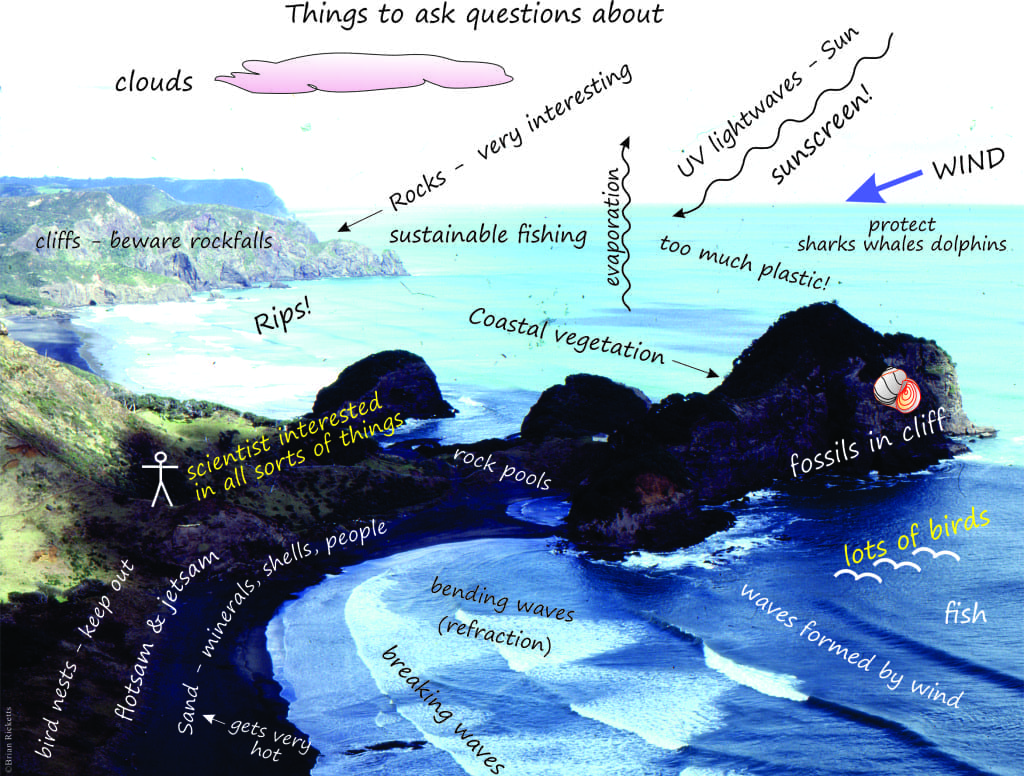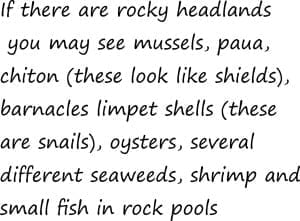This may seem a bit geeky, but while you’re at the beach why not check out some of the things that like to live at beaches, or in the sea, the air, beneath the sand or on rocks. There are other things like waves that are pretty cool, especially if you like surfing, boogie-boarding or sailing, or even just looking at them to see how they work. Scientists ask questions like;
“what is it?”
“how does it work or how does it live?”
“how does it react to other things going on at the beach (including what people do)?”
Waves We can ask all kinds of questions about waves, like how high are they, how fast do they move, or what happens when they break? (check out this YouTube clip)
How high are the waves? The chances are you won’t have a measuring tape or clock in the water, but no problem. You can estimate the height of waves by using boogie boards, frisbee or beach ball as a scale. You may decide that the waves are 2 frisbees or half a boogie board high; when you get back to the beach or back home you can measure these. You can also use your own height as a guide. If you stand waist deep then that is about half your height, so for example if you are 120cm high, then the part of your body sticking out of the water is about 60cm.
Waves can also bend. The scientific word for this is Refraction. The best place to see this is at a beach that has a point of land or rock jutting out into the sea. If you climb high enough you may see waves bending round the point of land.
Flotsam and Jetsam. Flotsam is something that is accidently lost overboard; this will often happen during a shipwreck. Jetsam is something that is deliberately thrown overboard by a crew of a ship in distress, usually to lighten the ship’s load so that it won’t sink. On our beaches you will see:
Wood, plastic bags, old toothbrushes, plastic bottles, glass bottles, plastic and foam beads, rusty tins, tangled rope, fish hooks. Some beaches have lots of this rubbish.
How much plastic can you find? Our oceans have millions of tonnes of plastic floating around. A lot of this plastic has just been thrown away by uncaring people. It kills birds, fish, and sea mammals like dolphins and whales. If you find plastic or glass or old tins can you please put them in a garbage. Thanks.
Where does all the foam come from?
Sometimes there is so much foam that it blows in great wads up the beach. It commonly forms
where waves break, in seawater that has organic matter from seaweed, algal blooms, dead critters and so on. You may have noticed that foam may have a brownish tinge – this is from the organic matter that is dissolved in the seawater or is present as very tiny bits and pieces of organic matter. Good explanation for this at NOAA



